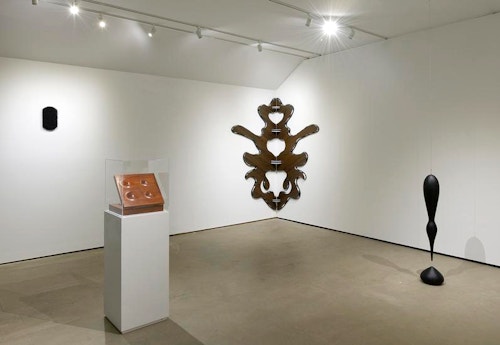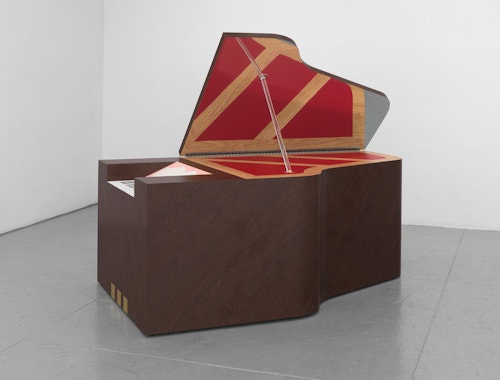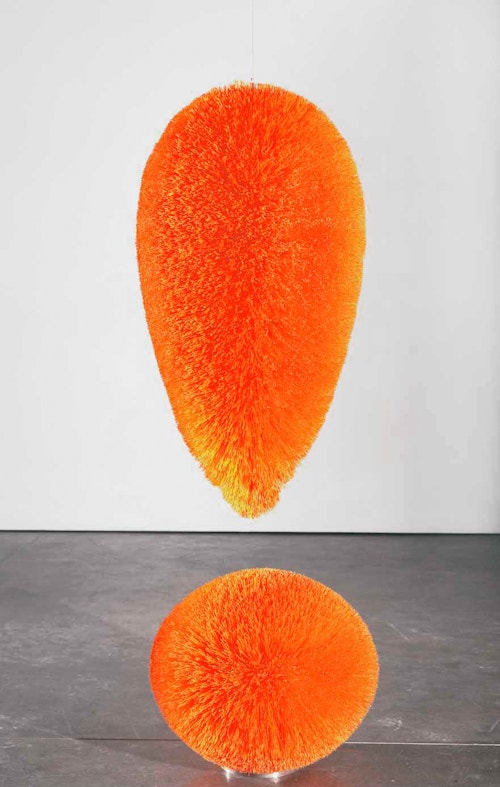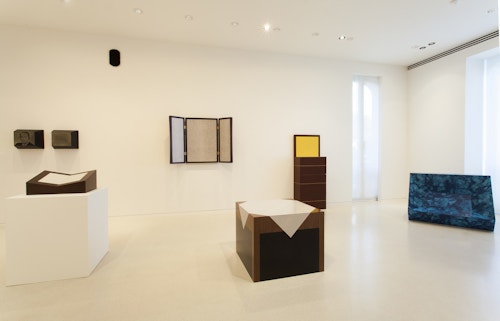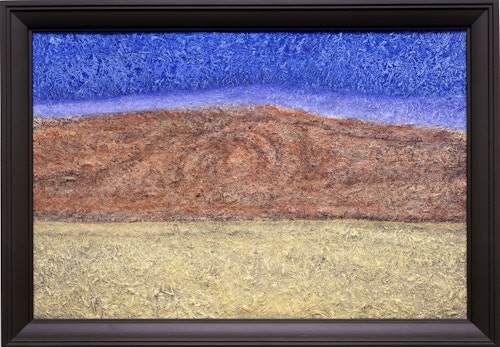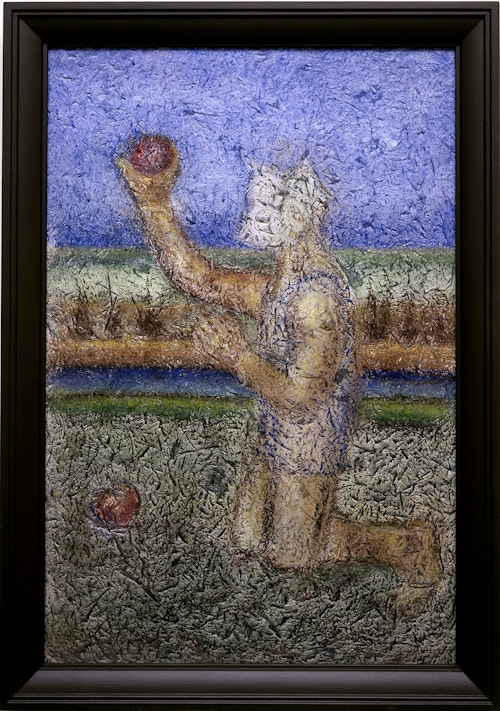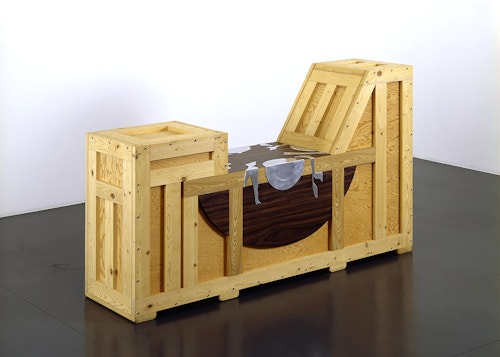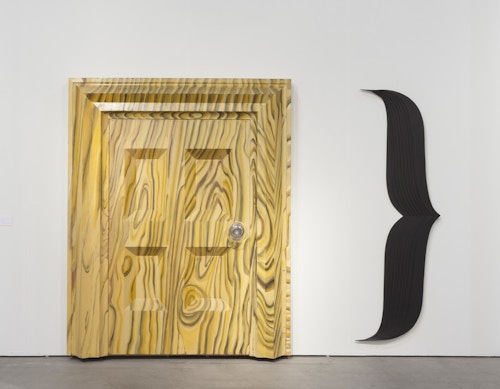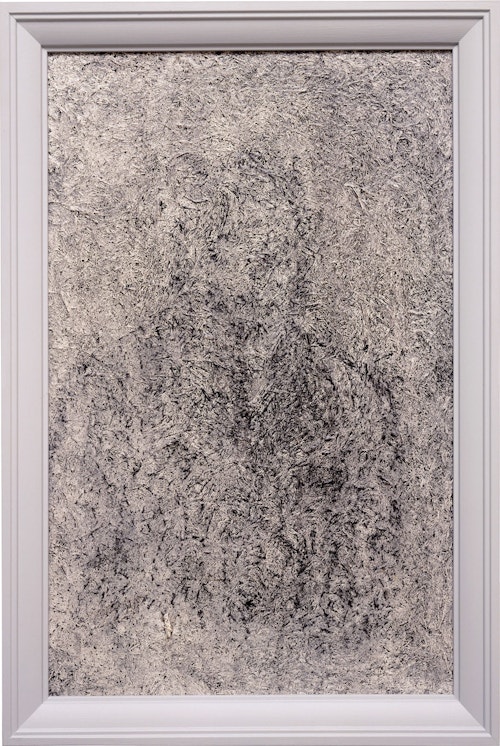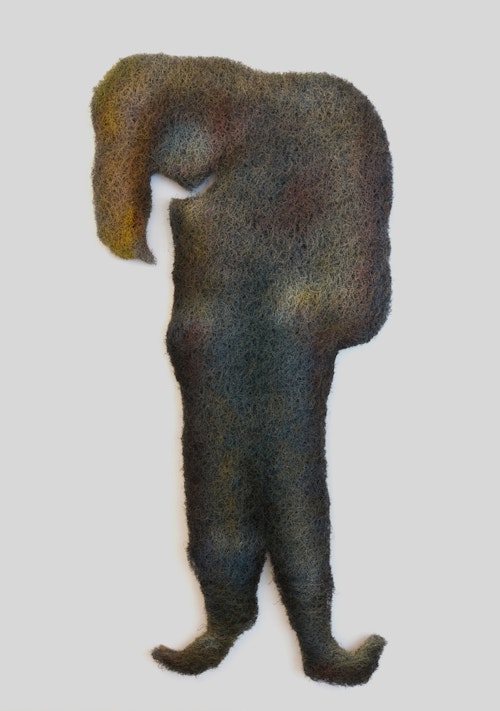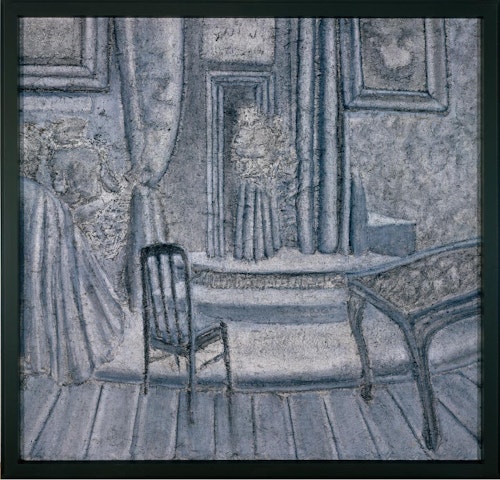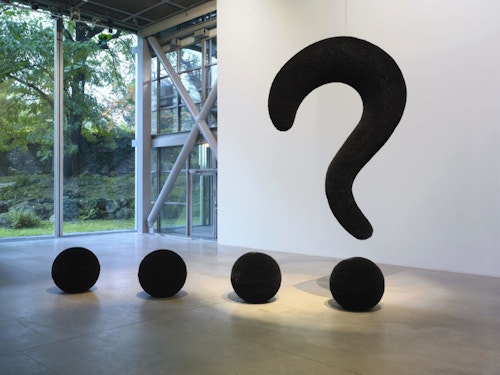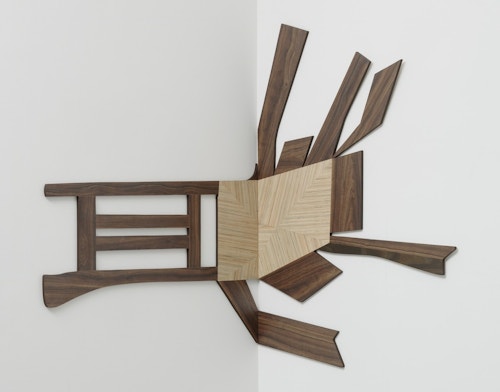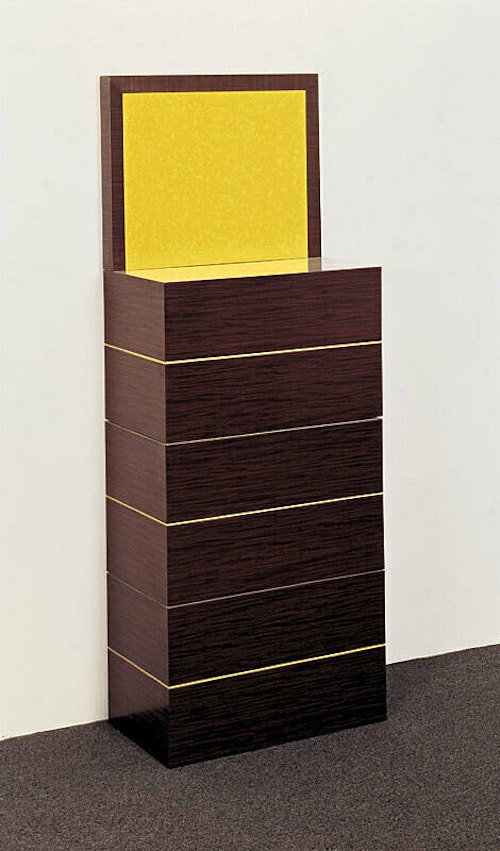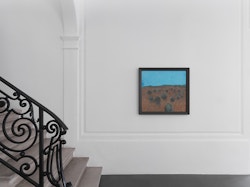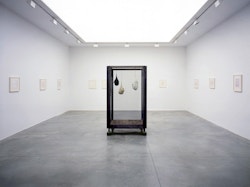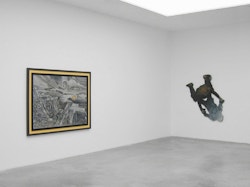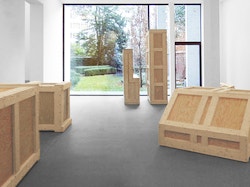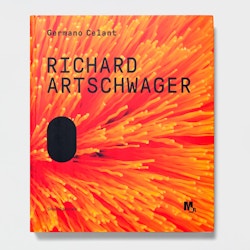
Richard Artschwager
Artschwager made art for over four decades but was originally trained as a microbiologist. After serving in the army during the Second World War, he studied with the Purist painter Amédée Ozenfant in Paris.
In the 1950s, he made furniture in Formica. This began as a commercial activity and evolved into a sculptural practice during the 1960s. At the same time, he also started working with found photographs, which he enlarged and used as the basis for a series of black and white paintings. These works explored themes connected to modern buildings, interiors, domesticity, furniture and working life. They were followed, in the 1970s, with the so-called ‘quotation pieces’: two and three-dimensional representations of punctuation marks which, by analogy with their written counterparts, frame ‘space’ and give it a purpose. In the 1990s, Artschwager made a series of sculptures in the form of shipping crates that further blur the distinctions between functional objects and art. Artschwager is well known for playing with the materiality of the artwork. His use of acrylic, whitewash and pastels on Celotex, for example, creates a three-dimensional effect that makes the paintings almost tactile. Or as Artschwager puts it: “Sculpture is for the touch, painting is for the eye. I wanted to make a sculpture for the eye and a painting for the touch.”
Richard Artschwager was born in 1923 in Washington, DC and died in 2013 in Albany, New York. A comprehensive travelling retrospective Richard Artschwager! was organised by the Whitney Museum of American Art, New York (2012– 14). Guggenheim Bilbao organised a survey exhibition of Artschwager’s work in 2020. His work was included in Documenta, Kassel, in 1968, 1972, 1982, 1987 and 1992.

